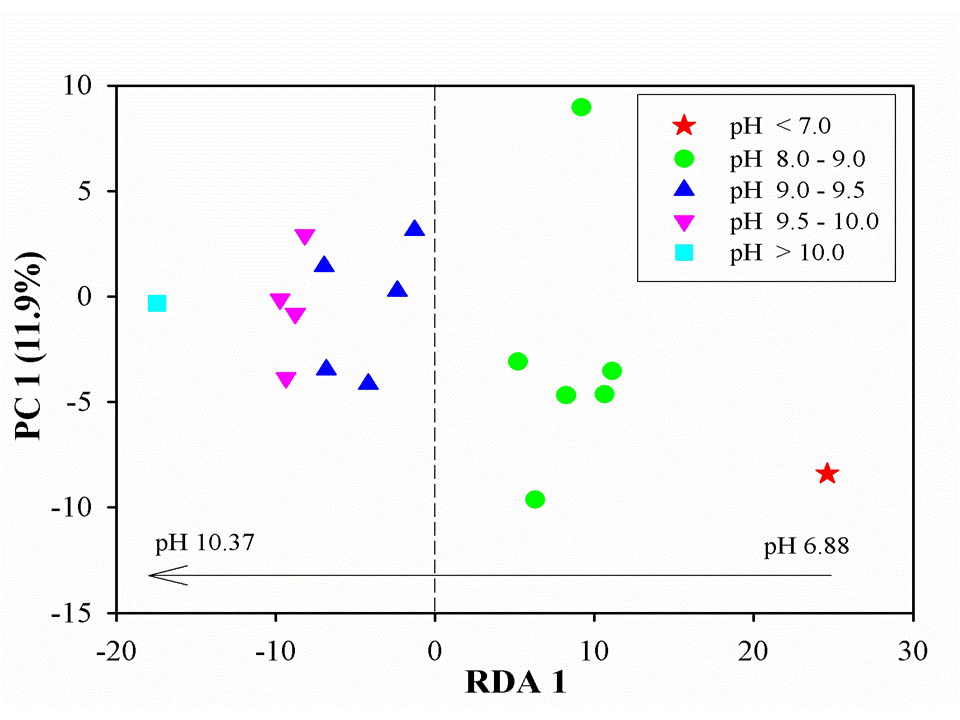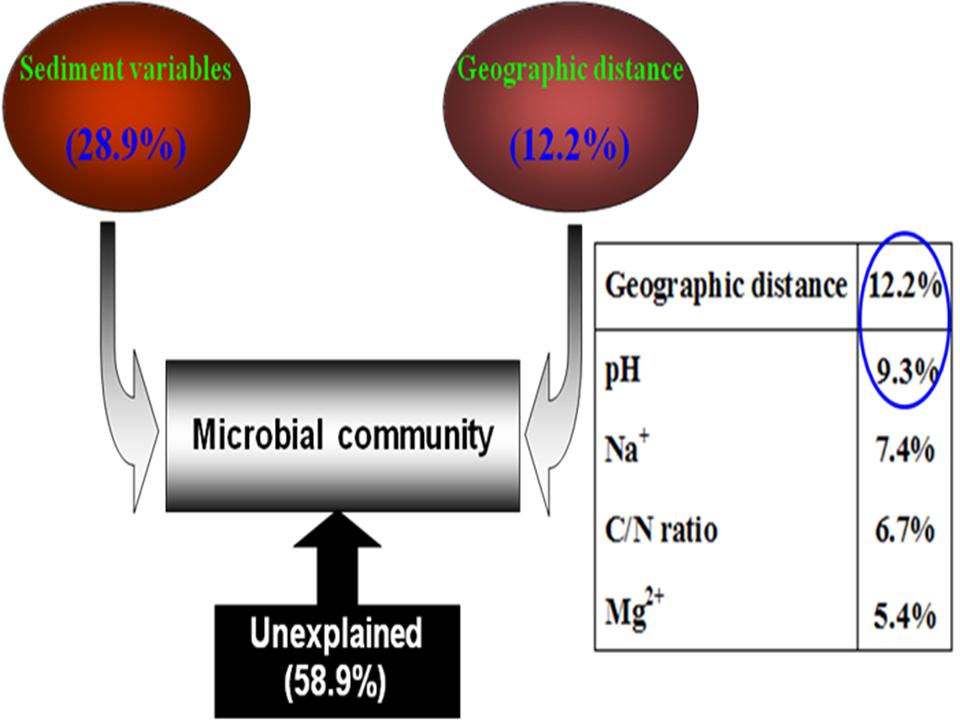One of the main goals in ecology is to explain patterns in the distribution of species. We wanted to quantify the relative importance of environmental heterogeneity and geographic distances to bacterial community variation. Only then for example, can we develop appropriate species conservation plans or predict how species colonization and turnover.
With sampling assistance from many colleagues, Dr. Haiyan Chu’s group examined the composition and genetic divergence of soil bacterial communities from 17 pristine lake sediments across Tibetan Plateau. We were surprised to find that bacterial phylotype richness and phylogenetic diversity only significantly correlated with pH, but not other factors, in contrast, archaeal communities were less affected by alkaline pH. Additionally, geographic distances as a single factor contributed the largest variations (12.2%) in bacterial community variation, though the sediment properties together explained more of the variation. Our data strongly suggest that pH is the best predictor of bacterial community structure in alkaline sediments, and confirm that both geographic distance and chemical factors govern bacterial biogeography.
Consequently, the reviewers gave complimentary comments: 1. This survey addresses the "other end" of the pH scale essentially; 2. It is highly interesting for a better understanding of the factors that shape microbial communities, and the biogeography of microorganisms. These findings have been published online in Environmental Microbiology (Geographic distance and pH drive bacterial distribution in alkaline lake sediments across Tibetan Plateau. 2012, doi:10.1111/j.1462-2920.2012.02799.x).
 |
|
|
Principal component analyses of the bacterial communities, with symbols coded by pH category

Variation partition analysis of the effects of geographic distance and sediment variables
on the phylogenetic structure of bacterial communities
|
|
